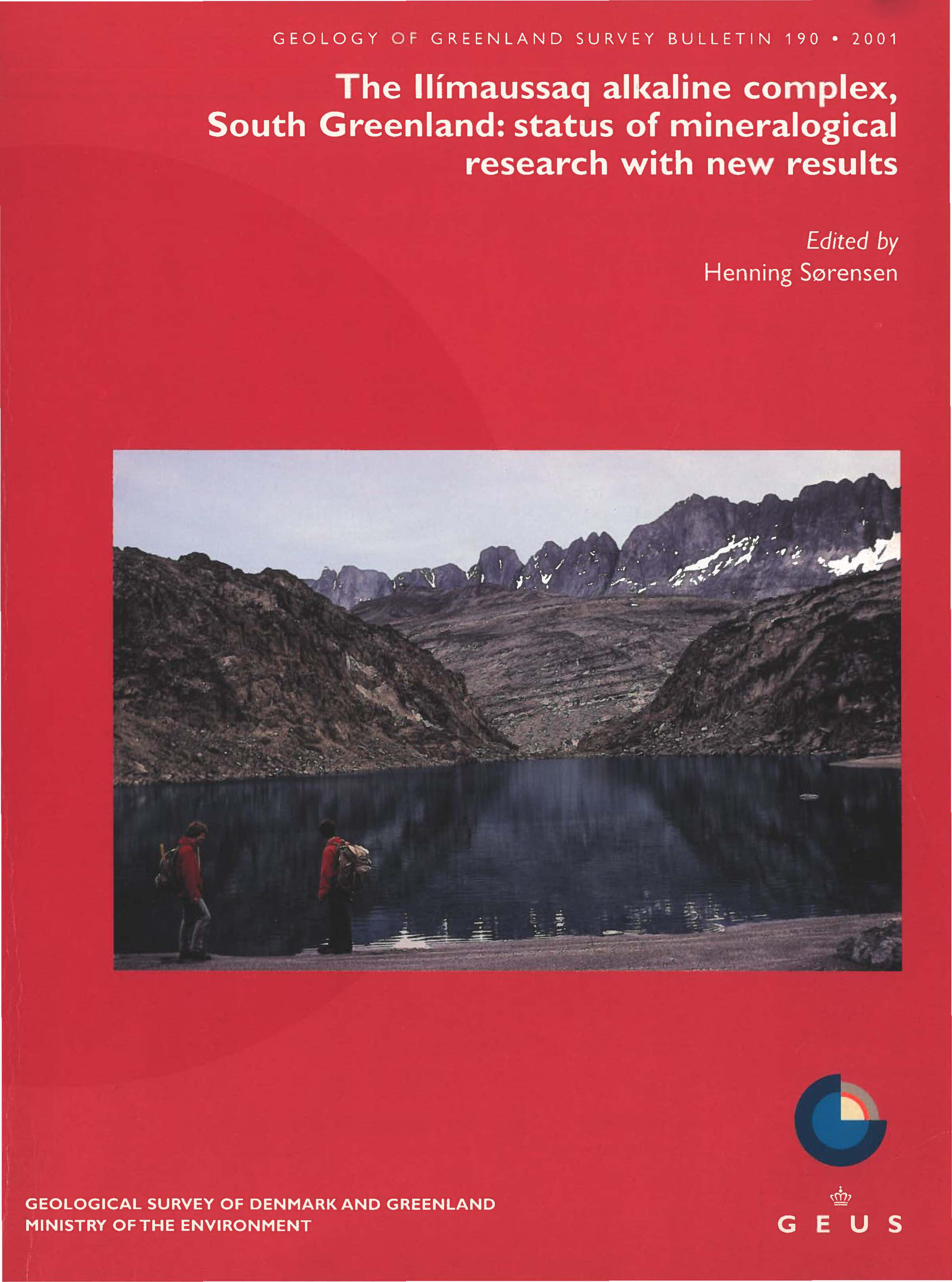Two new rare-earth-rich mineral associations in the Ilímaussaq alkaline complex, South Greenland
DOI:
https://doi.org/10.34194/ggub.v190.5185Keywords:
agpaite, Ilímaussaq, nacareniobsite-(Ce), nepheline syenites, vitusite-(Ce)Abstract
Two new types of REE-rich mineral associations have been discovered at Kvanefjeld in the northern part of the Ilímaussaq alkaline complex. Type 1 consists of ussingite veins intersecting lujavrite and containing 5–7% nacareniobsite-(Ce) and 2–4% steenstrupine-(Ce); the adjacent altered lujavrite contains up to 10–12% nacareniobsite-(Ce). Type 2 consists of cavernous sodalite-rich veinlets and vugs in lujavrite containing 5–8% vitusite-(Ce). The chemical compositions and unit cell parameters of REE minerals are given. Nacareniobsite-(Ce) and vitusite-(Ce) were considered to be extremely rare minerals in the Ilímaussaq complex. Nacareniobsite-(Ce) is now known to be of more widespread occurrence in some hyper-agpaitic rocks of the Ilímaussaq complex, and vitusite-(Ce) is known to be the precursor of the widespread occurrence of the yellow pseudomorphs termed erikite.
Downloads
Published
Issue
Section
License
This article is distributed under a CC-BY 4.0 licence, permitting free redistribution and reproduction for any purpose, even commercial, provided proper citation of the original work. Author(s) retain copyright over the article contents.


